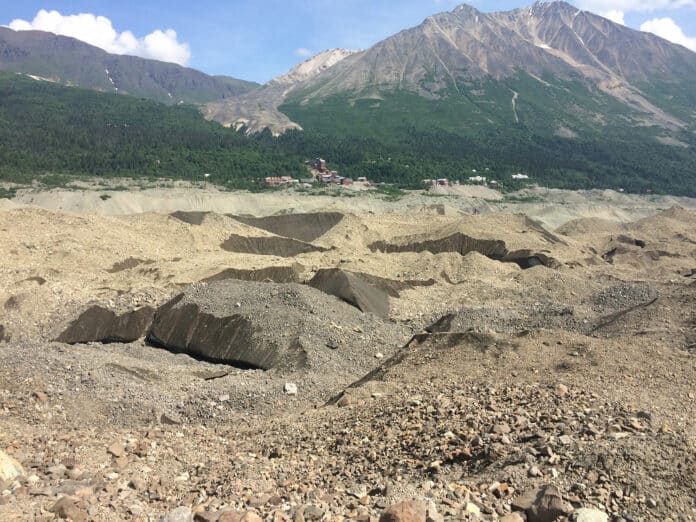Mountain glaciers, continuous ice masses other than the Greenland and Antarctic ice sheets, are a crucial water source for around two billion people and are in danger from climate change. Glacier mass loss affects sea level rise, water resources, and natural hazards.
David Rounce, a lead author of the new study, conducted his doctoral research on Imja-Lhotse Shar Glacier in the Himalayas from 2013 to 2017. There, Rounce and his team measured the glacier as it rapidly receded and the lake at its base grew.
According to a study, the world’s glaciers could lose as much as 40% of their mass by 2100.
Scientists modeled glaciers worldwide, except the Greenland and Antarctic ice sheets, to estimate how they will be impacted by global temperature increases of 1.5 to 4 degrees Celsius (2.7 to 5 degrees Fahrenheit) beyond pre-industrial levels.
According to the study, 50% of the world’s glaciers would melt with a 1.5 degree Celsius warming, contributing 9 centimeters (3.5 inches) to sea level rise by 2100. Nearly all of the glaciers in Central Europe, western Canada, and the U.S. (including Alaska) will have melted if the world warms by 2.7 degrees, the estimated temperature increase based on climate pledges made at the Conference of Parties (COP26) of the UN Framework Convention for Climate Change. 80% of the world’s glaciers will disappear and cause a 15-centimeter (6-inch) sea level rise if global Warming exceeds 4 degrees Celsius.
No matter how much the temperature rises, the glaciers will lose a lot of mass. This first modeling study uses satellite-derived mass change data describing the world’s 215,000 glaciers. The team’s sophisticated model used “new satellite-derived datasets that were not available globally.
For this study, scientists used data from Japan’s Advanced Spaceborne Thermal Emission and Reflection Radiometer (ASTER) on NASA’s Terra satellite and the USGS-NASA Landsat 8 and ESA’s Sentinel satellites.
The model considered the glacial debris cover, which comprises boulders, sediment, soot, dust, and volcanic ash present on the glacier surface. Due to its changing thickness, glacier debris is often challenging to detect. Still, it is significant because it can affect glacial melting: a thin coating of debris can accelerate melting, whereas a thick layer can insulate and slow it down.
Remote glaciers, which are removed from populated areas, are particularly effective climate change indicators. The availability of freshwater, landscapes, tourism, ecosystems, the frequency and severity of risks, and sea level rise are all impacted by glaciers melting quickly.
Ben Hamlington, NASA‘s Sea Level Change Team leader, said, “Sea level rise is not just a problem for a few specific locations. It’s increasing almost everywhere on Earth.”
Rounce said, “We are not trying to frame this as a negative look at the loss of these glaciers, but instead how we can make a difference. I think it’s a very important message of hope.”
Journal Reference:
- David Rounce, Regine Hock, Fabien Maussion et al. Global glacier change in the 21st century: Every increase in temperature matters. Science. DOI: 10.1126/science.abo1324
